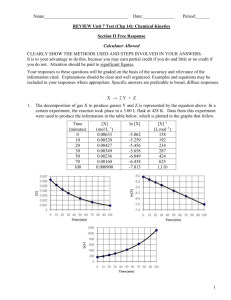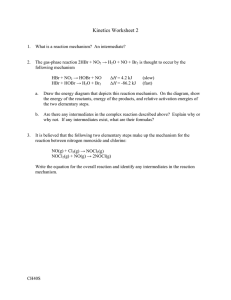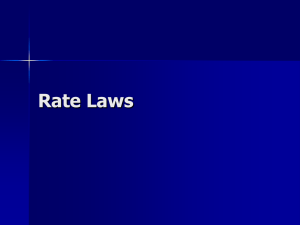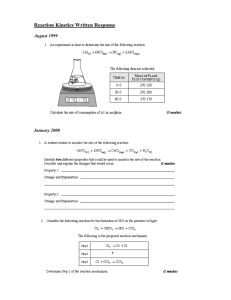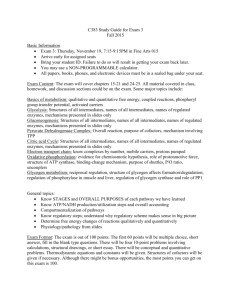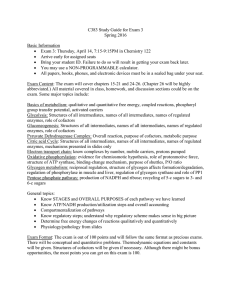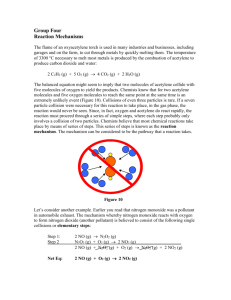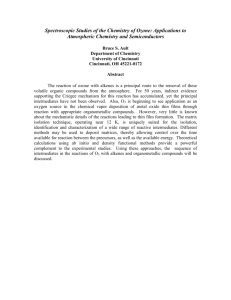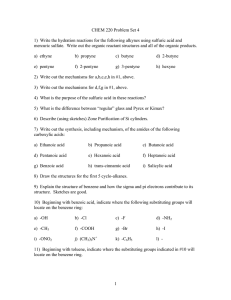Collision Theory & Rate Determining Step Practice
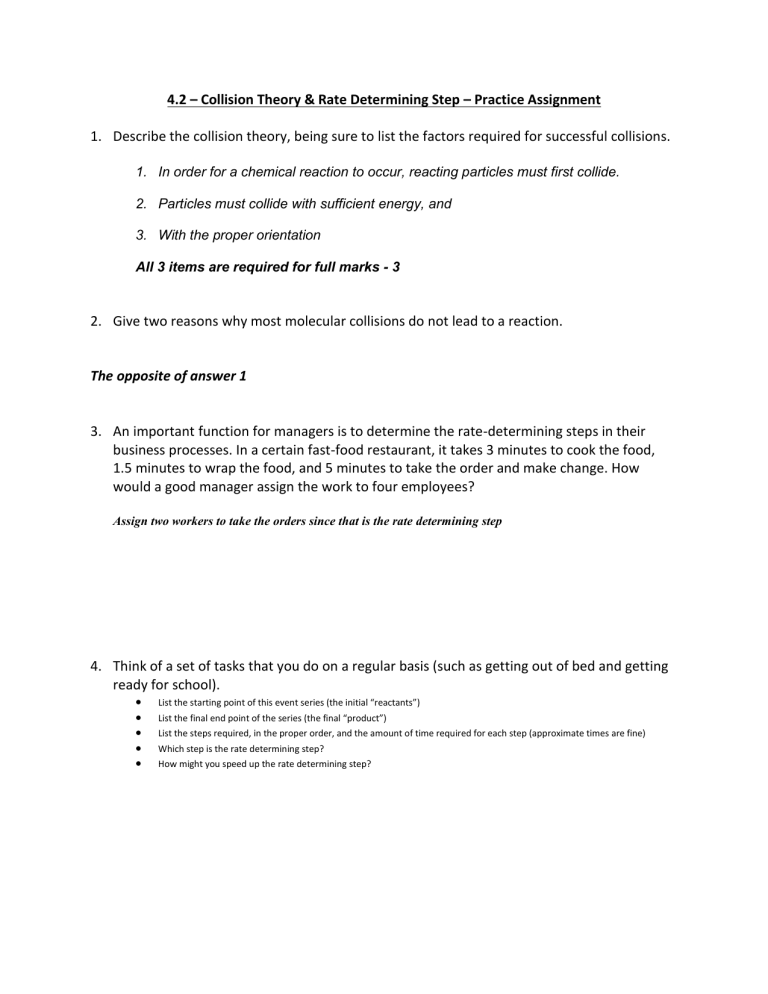
4.2 – Collision Theory & Rate Determining Step – Practice Assignment
1. Describe the collision theory, being sure to list the factors required for successful collisions.
1. In order for a chemical reaction to occur, reacting particles must first collide.
2. Particles must collide with sufficient energy, and
3. With the proper orientation
All 3 items are required for full marks - 3
2. Give two reasons why most molecular collisions do not lead to a reaction.
The opposite of answer 1
3. An important function for managers is to determine the rate-determining steps in their business processes. In a certain fast-food restaurant, it takes 3 minutes to cook the food,
1.5 minutes to wrap the food, and 5 minutes to take the order and make change. How would a good manager assign the work to four employees?
Assign two workers to take the orders since that is the rate determining step
4. Think of a set of tasks that you do on a regular basis (such as getting out of bed and getting ready for school).
List the starting point of this event series (the initial “reactants”)
List the final end point of the series (the final “product”)
List the steps required, in the proper order, and the amount of time required for each step (approximate times are fine)
Which step is the rate determining step?
How might you speed up the rate determining step?
5. Nitrogen monoxide reacts with hydrogen gas to produce nitrogen gas and water vapour.
The mechanism is believed to be:
Step 1: 2 NO → N
2
O
2
Step 2: N
2
O
2
+ H
2
→ N
2
O + H
2
O
Step 3: N
2
O + H
2
→ N
2
+ H
2
O
For this reaction find the following: a) the overall balanced equation
Net Reaction: 2 NO + 2 H
2
→ N
2
+ 2 H
2
O b) any reaction intermediates there are two reaction intermediates - N
2
O
2
and N
2
O
6. Given the following reaction mechanism, determine the equation for the overall reaction.
Step 1: A
2
(g)
2 A(g)
Step 2:
Step 3:
2 A(g) + 2 B (g)
2 AB(g)
2 AB(g) + C
2
(g)
2 ABC(g)
Step 4: 2 ABC(g) 2 AC(g) + 2 B(g)
Overall: A
2
(g) + C
2
(g)
2 AC (g)
Also list the reaction intermediates for this reaction:
Reaction intermediates are A, AB, and ABC (B is a catalyst)
